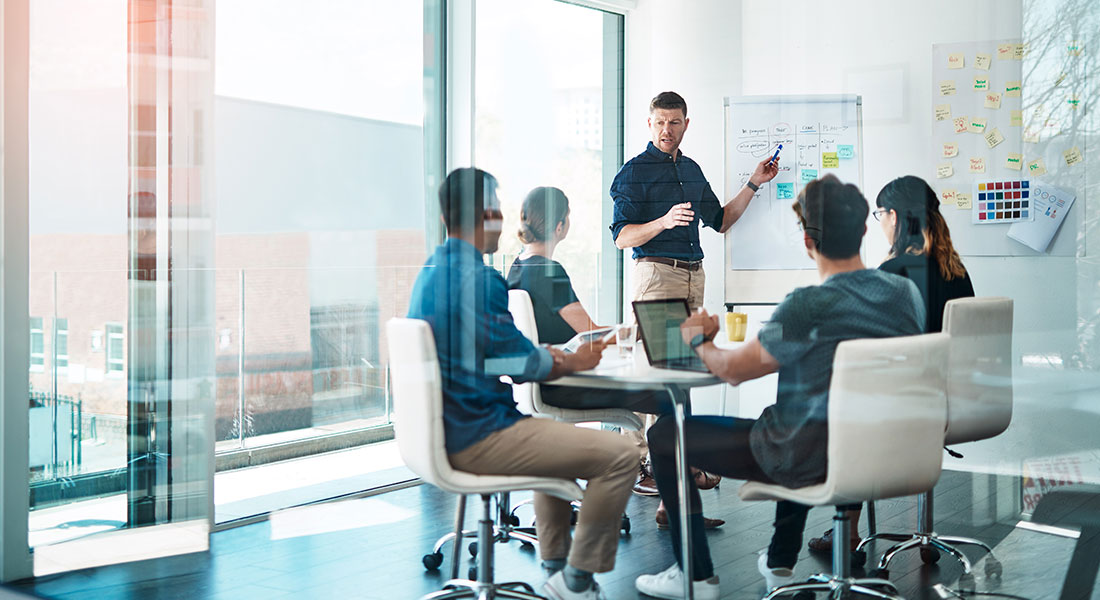The When and Where of Performance Support in Corporate Training

Corporate learning happens from different sources ranging from formal training to learning by watching or taking help from colleagues. However, the biggest learning is often through the challenges we face on the job and how we overcome them. According to 70:20:10 model, 70% of learning happens from job-related experiences, 20% from social learning, and 10% from structured or formal learning. Performance support ties in with experiential learning and supports training beyond its formal form by transforming knowledge acquisition into knowledge application.
The Role of Performance Support in Corporate Training
- When the consequences of errors are expensive
- When the frequency of the task is low
- When performance depends on a large body of information
- In cases of high employee turnover
- When the task involves many steps
- When limited resources are available for training
A Brief Note on Performance Support
“A helper in life and work, performance support is a repository for information, processes, and perspectives that inform and guide planning and action,” say Allison Rosset and Lisa Schafer in their book Job Aids and Performance Support.
Performance support solutions in the form of performance support tools help employees with the solutions they crave for at their moment of need. A sales executive is better able to list down the features of a new product to the customer because the organization has made them readily available on his smartphone in the form of an infographic. A newly joined service technician can easily assemble the parts of a machine because he has bite-sized videos that explain each step involved in the process.
Performance support tools in the form of infographics, bite-sized videos, GIFs, flowcharts, e-books and PDF documents can be on your employees’ desks, their pockets, on walls next to equipment, on mobile devices, on dashboard displays to enrich their work by right-in-time intervention.
Performance support in corporate training helps employees quickly zero in on their required information and manage tasks, empowering learners in addition to saving time. If performance support tools are microlearning modules based on a single learning objective they will be easier to use and apply at the moment of need.
When to Use Performance Support?
1. When the consequences of errors are expensive
How secure is your company data? According to a survey conducted by the tech giant Dell, there is a huge chance of employees mishandling company data due to their poor understanding of data privacy policies. The consequence of this is going to be potentially severe. Similar can be the outcome when employees underperform due to the lack of support in critical tasks such as cleaning a hazardous chemical spill.
Research says that 90% of knowledge transmitted to a human brain is visual. In situations where the consequences of errors are expensive, this is a compelling reason to use eye-catchy and easy-to-scan performance support tools such as infographics or a short demo video. The brain that is most likely to retain information communicated through visuals will easily retain the knowledge shared through such performance tools and transfer them into effective performance.
2. When the task is to be performed infrequently
Employees perform certain tasks infrequently such as filling yearly self-evaluation forms on HRIS software or a compliance requirement that requires only a yearly response. Weeks or months after receiving training on such rarely performed job-tasks, an employee cannot be expected to precisely remember every step involved.
A performance support tool can boost such infrequent performance. Scheduling a fresh training or asking employees to go through an entire course to refresh knowledge on a particular task can be impractical and time-consuming.
Checklists are an effective performance support tool when trying to accomplish infrequent tasks. They help ensure each step involved in the task is completed and all key points are addressed.
3. When performance depends on a large body of information
In today’s information age, training alone is unlikely to help employees remember everything. For example, while training your sales force on your product portfolio, you typically need a foundation course on how each product works, accompanied by performance support tools such as a decision trees, comparison charts and PDF documents.
A product training program will have modules on the products, their features, how they fare against competitors, etc. This makes it difficult to access information for a learner such as a sales executive who at a time might need information from several modules to address customer queries.
How does performance support help?
Performance support tools address the learner’s just-in-time workplace requirements by collating all the essential information into a single snackable format. In this example, a performance support tool such as an infographic on each product can quickly summarize the product name, its features, its assembly, how it fares over competition, and more. This can easily be carried around by the executive and helps him reinforce the product knowledge at a quick glance.
4. When there is a high turnover
It gets hard to train employees when there is a huge turnover. For example, seasonal workforce in the retail industry is active only for a couple of months each year. Organizations will need this workforce to be in the field and not at training sessions.
These employees majorly rely on performance support tools for professional help. A rate card that is set for the year, an infographic with a step-by-step illustration of the process, or a checklist on the dos and don’ts of customer service will serve the immediate requirements of such employees who are hard-pressed for time.
5. When the task involves many steps
When a task to be performed involves multiple steps or many attributes, it becomes complex. Performance support tools appeal more to those learners who confront lengthy and information-intensive challenges. For example, an employee might not be involved throughout a task that involves multiple steps. However, to understand why a specific step is required, employees require the big picture.
A performance support tool in the form of a process map provides both upstream and downstream views, thus offering a complete picture to employees. It helps employees understand how exactly a particular task fits into the procedure as a whole.
6. When limited resources are dedicated to training
Performance support is an ideal option for situations with scare resources. Sometimes, a performance support tool is all a learner needs and it can be much more effective than training. For instance, if you want your employees to remember 50 codes, a document that lists all the codes can be put where they will need it the best. In this case, a full-fledged training program where you spend a lot of time and money helping learners memorize those 50 codes is quite unnecessary. On the other hand, a performance support tool is a fair enough solution to meet learner needs.
Today, with the ease of using and recording videos on smartphones, organizations are also promoting the use of learner-generated content as an effective performance support tool. Learners can record short instructional videos at work and share it with their peers through the LMS. Peers can watch these videos when needed at work and learn from each other’s experience.
Both training and performance support tool can assist performance on the job. But, “Training is a means, not an end”, says Kent Gustafson, professor in Instructional Technology at The University of Georgia. When employees lack the necessary skills, training makes most sense by helping them gain the required skill set.
However, to transfer this gained skill into effective performance, you need performance support tools that ideally help learners achieve high performance. Would you like to know more on how microlearning modules in the form of performance support tools can fit into your overall training framework? Check this e-book for more insights on this topic.





